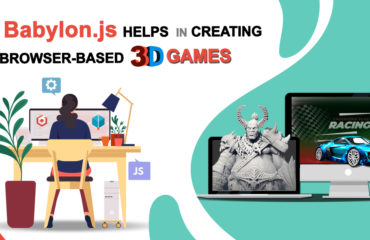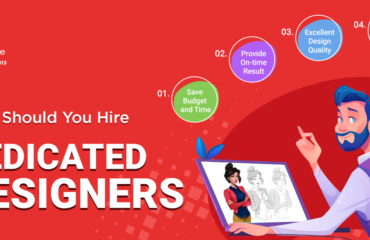
The Growing Importance of 3D Modeling
In this landscape, businesses must carefully evaluate whether to manage 3D modeling internally or to partner with an outsourced provider. Let’s dive into the key considerations of both approaches.
In-House 3D Modeling: Advantages and Challenges
-
Advantages of In-House 3D Modeling
Complete Control and Customization: One of the primary benefits of an in-house team is the level of control you maintain over the modeling process. With an internal team, you can ensure that all models are created according to your specifications, brand guidelines, and project deadlines. Additionally, you can adapt the work quickly if changes or revisions are necessary.
Real-Time Collaboration: Having an in-house team facilitates close collaboration between designers, engineers, and other stakeholders. This results in faster feedback loops and smoother communication when discussing changes, modifications, or new requirements. In fast-paced environments, this can be a key factor in speeding up the design and development process.
Intellectual Property Security: When you keep the work within your company, there’s a reduced risk of intellectual property (IP) theft or leakage. In industries where proprietary designs are crucial, internal teams provide better control over sensitive data and the security of your models.
Deep Knowledge of Company Needs: An in-house team is more likely to be deeply immersed in your company’s culture, goals, and workflow. They are in a better position to understand the nuances of your business and create models that align with your long-term strategy and vision.
-
Challenges of In-House 3D Modeling
High Operational Costs: Maintaining an in-house 3D modeling team requires significant investment in talent acquisition, training, software tools, and hardware. You need to pay salaries, provide benefits, and ensure that the team has the resources they need to stay at the cutting edge of technology. These costs can be prohibitive for small to mid-sized businesses.
Limited Skill Set: While in-house teams can offer consistent quality, they may not always have the broad skill set required for specialized projects. If your business requires a range of modeling techniques, such as architectural modeling, character modeling, or product rendering, you may need to hire a diverse team from a 3D game art outsourcing company, which can further increase costs.
Scalability Issues: Scaling your in-house team up or down based on demand can be challenging. If you experience a spike in project volume, you might need to hire temporary workers or freelancers, which can create inconsistency and disrupt workflow. Similarly, if demand slows, maintaining a full-time team can lead to inefficiency.

Outsourced 3D Modeling: Advantages and Challenges
-
Advantages of Outsourced 3D Modeling
Cost Efficiency: One of the main reasons companies opt to outsource 3D modeling is cost savings. Outsourcing allows you to tap into specialized expertise without the overhead costs of maintaining an internal team. Outsourcing partners often operate in regions with lower labor costs, which can translate to significant savings for your business.
Access to Expertise and Innovation: Outsourcing provides access to a diverse pool of talent with experience in a wide range of industries. Whether you need highly specialized models or cutting-edge techniques, external providers can offer the latest tools, technologies, and expertise to meet your needs. These external teams often stay up-to-date with the latest industry trends and can bring innovative ideas to your project.
Scalability and Flexibility: Outsourcing 3D character art design services gives you the flexibility to scale up or down based on project requirements. When demand is high, you can easily hire additional resources, and when it’s low, you can reduce costs by scaling back. This flexibility allows your business to stay agile and responsive without the burden of maintaining an oversized internal team.
Faster Turnaround Times: When working with a specialized outsourced provider, the turnaround time for projects can often be faster. External teams typically have streamlined processes and experience working on a wide range of models, enabling them to deliver high-quality results in less time. Additionally, many outsourced firms work in multiple time zones, allowing for quicker progress on projects through round-the-clock work.
-
Challenges of Outsourced 3D Modeling
Communication and Coordination: One of the most common challenges of outsourcing is communication. With external teams, you may face difficulties in aligning your expectations, conveying intricate details, and providing real-time feedback. Time zone differences and language barriers can also contribute to delays or misunderstandings in the project.
Quality Control: While outsourcing can give you access to top-tier talent, maintaining consistent quality can sometimes be difficult. External teams may not be as familiar with your brand and objectives as an in-house team would be, which can lead to discrepancies in the final output. To mitigate this risk, you must ensure that the external provider has a robust quality control process in place when offering high-quality 3D character art design services.
Security and Confidentiality: Outsourcing can sometimes expose your business to risks related to data security and confidentiality. When working with an external provider, you need to take steps to ensure that your intellectual property is protected, including the use of non-disclosure agreements (NDAs) and secure communication channels.
Conclusion: The Best of Both Worlds with Red Apple Technologies
Both in-house and outsourced 3D modeling come with distinct advantages and challenges. The best approach for your business depends on factors such as budget, project scope, team capabilities, and long-term goals. If you need full control, fast collaboration, and deep knowledge of your brand, an in-house team may be the right choice. However, if you are looking for flexibility, cost efficiency, and access to specialized expertise, outsourcing could be the better option.
As a recognized 3D game art outsourcing company, Red Apple Technologies offers a unique solution that caters to both approaches. Whether you prefer an end-to-end project managed by an external team or dedicated resources who work as an extension of your in-house team, we can tailor our services to meet your specific needs. Our skilled 3D modeling experts have experience across various industries, ensuring that your project is executed to the highest standards. With the flexibility to scale resources up or down based on your requirements, Red Apple Technologies provides the perfect balance of efficiency, quality, and security for your 3D modeling needs.
To Have A Better Understanding On This Let us Answer The Following Questions
What are the potential cost savings of outsourcing 3D modeling versus maintaining an in-house team?
Answer: When outsourcing 3D modeling, you have the scope to avoid saving time on in-house recruitment, prevent expenses on purchasing powerful tools and technologies, and adjust the team size. Whereas, in the in-house management, you have to invest a lot from recruitment to workspace expansion.
What factors should I consider when deciding between in-house and outsourced 3D modeling?
Answer: There are numerous factors like project complexity, business objectives, expertise, and much more that come into play when choosing between in-house or outsourced 3D modeling solutions. For assistance, you can consult with a 3D game art outsourcing company.
What tools and technologies are essential for setting up an in-house 3D modeling team?
Answer: When setting up an in-house 3D modeling team, you have to set up cutting-edge and high-performing computers with a high-resolution screen. Moreover, you also have to install software products like Autodesk Maya, Blender, ZBrush, and others to get a satisfactory result. But to ensure the proper utilization of this tool, you must hire 3D modeler.






























 Book an Appointment
Book an Appointment Get Instant Project Estimation
Get Instant Project Estimation WhatsApp Now
WhatsApp Now

